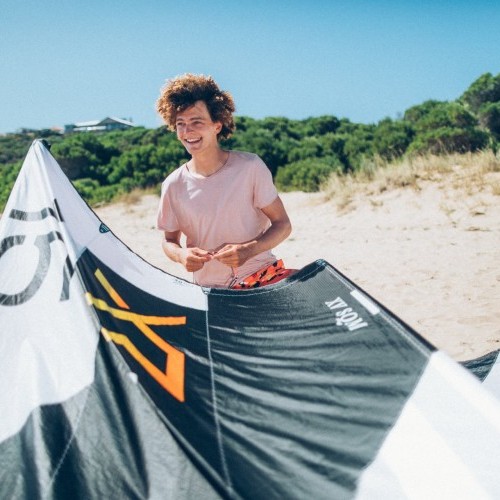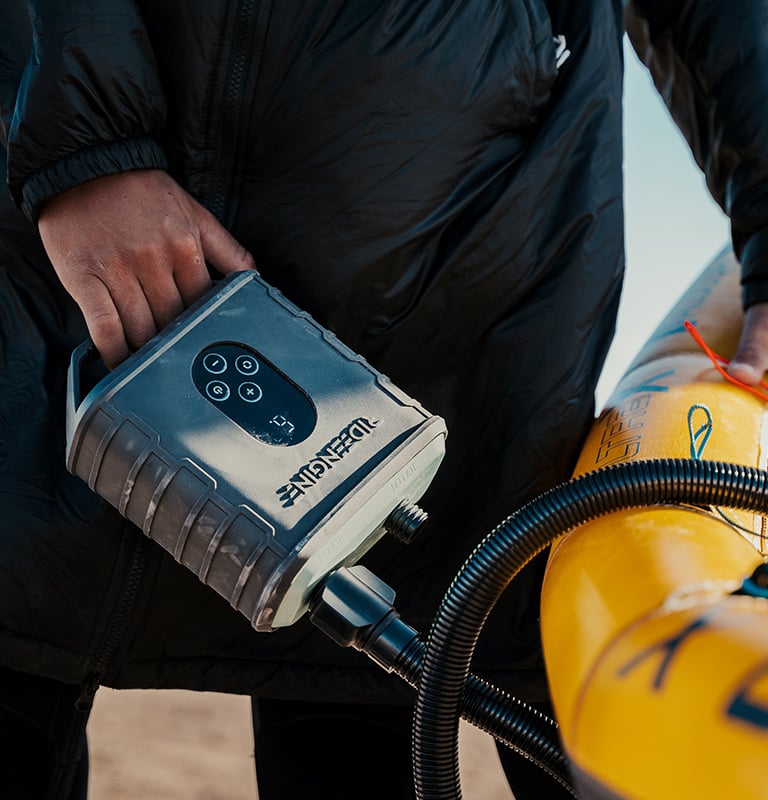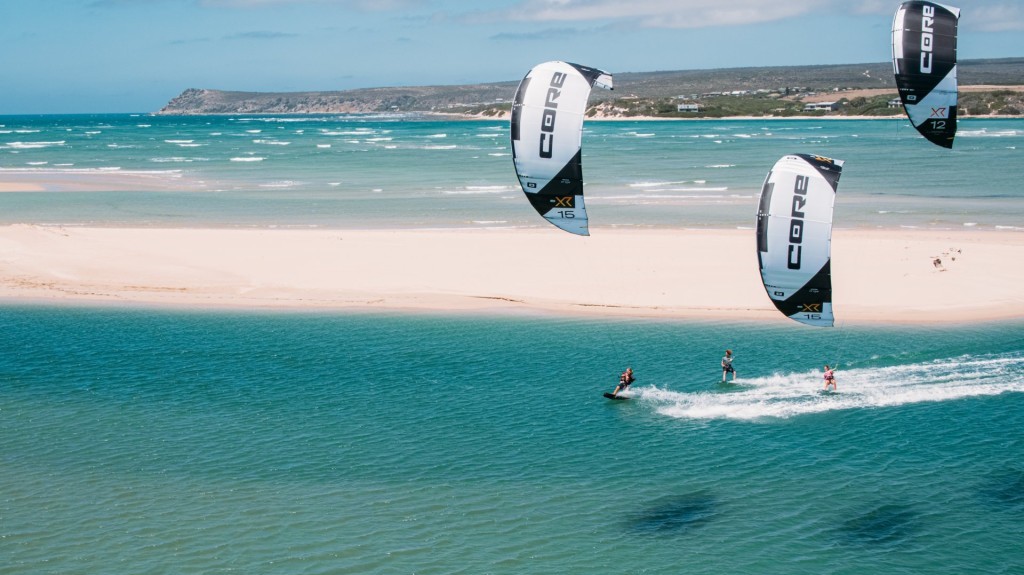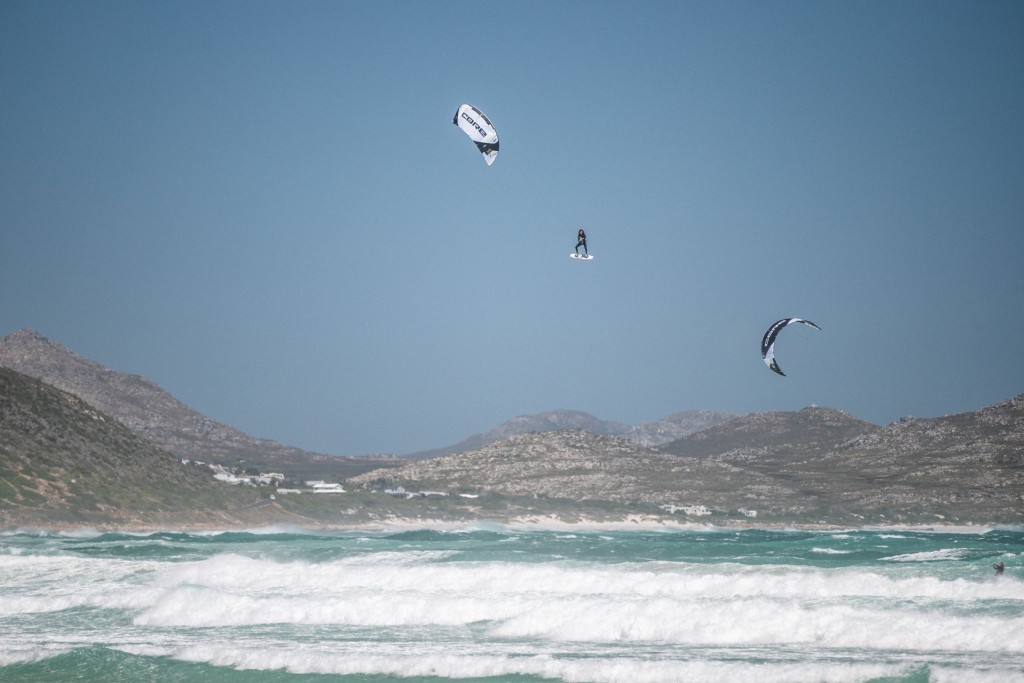
Big Air Boomer Janek Grzegorzewski – A Laci Kobulsky Interview
Features / Mon 23rd Aug, 2021 @ 3:00 pm
If you are interested in big air kiteboarding, you certainly know the name of the young talented Pole, Janek Grzegorzewski. He is a phenomenal rider rewriting history, with several Never Been Done tricks in his account, plus awards from prestigious big air competitions. We were especially interested in any tips and tricks on how to jump like him! It was a great honour for us when this modest guy found time to sit down for an interview during a busy season. Read on to find out all about Janek!
Interview by: Laci Kobulsky
Photos: Thomas Burblies
Hey there, Janek! Before we start talking about your killer big air career, let’s talk a bit about you. Where are you from and how old are you?
Hello! Starting off, I would like to thank you for giving me the opportunity to come for your interview and present myself! My name is Janek, I’m 20 years old, and I’m from Poland.
You were part of the World Class Kiteboard Academy. How long did you attend, and how did it help your kiting?
World Class Kiteboard Academy is an amazing high school for young kiteboarders in which I luckily had the opportunity to attend, eventually graduating in 2018. It’s a school that provides an opportunity to kite every day, as well as to travel with the goal of finding the best kitesurfing spots on planet earth with the ideal conditions for progression.
I was there for two years, and I must say that it was probably the place where I learned the most because of my classmates, who were motivated to push in every kite session. With people of similar age to mine and with the same goals to push the sport to the next level, it was easy to progress and to encourage each other to land those new tricks and reach bigger heights.

Win a Ride Engine Air Box Electric Pump this issue in our FREE subscriber prize draw.
What was the best spot you guys went to with WCKA?
We have been to so many different places, with each of them having something unique to it. We visited Hood River in Oregon, Maui in Hawaii, Sherman Island in California, Panama, Colombia, Brazil, Dakhla in Morocco, Cape Town in South Africa, Tarifa in Spain, and lastly, Sicily in Italy. It was a crazy adventure that I will never forget. Because of my big air kitesurfing focus, my favourite spot was Cape Town, as it delivered the strongest wind reaching over 45 knots. There are left foot forward kickers reaching up to 3m, which allows me to fly higher than I could have ever imagined!
You single-handedly shuffled the deck of big air kiteboarding. How did you get into this discipline, and why?
I started kitesurfing with the idea of being able to fly. I always wanted to reach new heights as well as be able to walk on water – which I believe is a dream of many people. Within that, big air kitesurfing was my favourite discipline. Even though all my schoolmates from World Class Kiteboard Academy were doing freestyle tricks, I always wanted to fly the highest I can and to feel that adrenaline rush high up in the sky.
I will take this question as an opportunity to say thank you to my beloved parents as they were the ones who always introduced me to new sports and gave me everything I needed to be able to progress so far. Dziękuje Mamo I Tato! Kocham was.
Was there ever a point when you realised, “Ha! I might be good at this big air thing”?
At the very beginning of my career, I said to myself that one day I will attend Red Bull King of the Air. I have always followed my idol, Nick Jacobsen, as he was my favourite kitesurfer to learn from. He always had the tricks, the style, and a very cool personality to show, attract and motivate people to kite. He is a pure legend of kitesurfing and my role model.
Fun fact: The most prestigious kiteboarding competition is the Red Bull event King of the Air 2021, which will take place in Cape Town in November, and I will compete against Nick! Haha 😛
It seems like the perfect time for you with kiteboarding competition going towards big air more and more. You have competed in KOTA before. How was it?
I’m very happy to see that kitesurfing is heading in the Big Air direction once again. Many years ago, big air kitesurfing was the big thing that all riders were doing, but it had slowly shifted into the freestyle discipline. When I was in World Class Kiteboard Academy, all my friends were doing freestyle only. Right now, we are in a shift from freestyle to big air, and who knows, maybe in the coming years, we will see that the sport will have another discipline shift like big air foiling.
When I went to King of the Air, it was my first start in a big competition. I must say it went horribly. I was really nervous and didn’t have a strategy. Of course, without good preparation for the competition, there can be no good results. I have learned from my mistakes, got into real professional preparation, and now I know that I’m ready for the next KOTA.

Win a Ride Engine Air Box Electric Pump this issue in our FREE subscriber prize draw.
Congrats on your recent win in BAKL! Already guys like Liam were humble to lose to you in the finals, great achievement! Did the conditions suit you, or what gave you the edge over there?
Thank you so much! Full Power Balneario was one of the World Tour stops for the Big Air Kite League. This was probably my greatest achievement in my career because of the riders that were in there. I have never won a competition with riders being on such a high level. I rode with very experienced kitesurfers like Liam Whaley and young new generation riders like Andrea Principi, who is only 17 and already landing tricks that have never been seen before. Andrea managed to get on the podium in 3rd place, and I know that within the next few years, those young guys will be way better than me as they learn faster than anyone else. Huge congratulations to him as he has inspired so many people when competing.
The competition itself was very challenging for everyone. We got over 45 knots of wind, and nobody was prepared for it. I used my 7m XR7, which I’m not used to as normally it’s very hard to get that strong of wind. The landing area was very choppy, so it was making it challenging to land the tricks. I believe that this is where I got the advantage on top of other competitors. With the XR7 kite, downloops can be implemented super softly, and the landing speed can be decreased, which makes it easier to stick the tricks.

Win a Ride Engine Air Box Electric Pump this issue in our FREE subscriber prize draw.
Obviously, what you are doing takes balls. But you seem strangely in control. Are you scared? If so, how do you overcome it and send it so hard?
I always wanted to go higher and fly further, and in my opinion, there is a safe way to do it. There is nobody in the kitesurfing community that came and started jumping extremely high out of nowhere. It all comes with slow and steady progression, and if you keep increasing your power in the kite slowly as well as learn the technical side of how to jump, the height will come by itself. It’s not something that will happen in one day; it’s a constant progression of slowly pushing your limits to be able to jump higher.
Of course, there are many times that I’m scared because of the power that I hold within the kite, as well as the crazy big waves I kite in, but this is what I have always strived for. I belong to the adrenaline junkies’ group, so the more challenging the conditions get, the better I feel on the water. One way to be able to push yourself on the water is to kite with people that are way better than yourself. It happened to me so many times that I was too scared to try a trick on the water, but if there are other crazy guys that are doing it before you, it kind of makes it simpler to try it yourself as you know it is possible.
What was the gnarliest jump you ever did?
The gnarliest jump I ever did was in Cape Town, and the trick is called Double Boogie Contraloop Boardoff. The manoeuvre itself must be executed in strong wind (30 Knots plus) because the loop that I’m executing needs to have enough height for the kite to catch me. With all the kiteloops/contraloops, the idea of the trick is to put the kite in the lowest position, which makes it scary as the lower the kite is, the longer it takes to recover and catch me. On top of all of that, I have to think about the other aspects of the trick, which is the double front rotation and taking the board off while being at the highest point of the jump. It’s the most technical manoeuvre that I currently have, and with strong wind reaching over 40 knots and big kickers over 3m high, I can reach heights of 20m plus.
This is the gnarliest trick for me because I need to pay attention to a lot of little details; a good take-off, small rotation at the start, taking the board off at the top, implementing the kiteloop with a front hand (contraloop), which throws me into a second rotation on the way down. Usually, I’m facing the kite backwards on my second rotation, which makes it challenging to know where the kite is and where I will land, and with all of that, I still need to put the board back on my feet with the idea to do it as late as I possibly can so the trick looks even more gnarly.
I saw you doing your “tornado” spin recently on Instagram. How can you do that?! Any advice if I want to try?
Tornados are made by spinning around the axis of the body as many times as possible. Those tricks are one of my favourites because of their technical nature. When I started learning how to do the most spins, I was able to reach a maximum of 4 rotations, for which I was really proud at the time. Luckily, my sister Zosia is training figure skating on a high level, and her coach came to me and said that my rotations are so badly implemented that if I worked with him for just 1-2 hours, he would teach me how to spin faster like ice skaters can. With that being said, I decided to go to him, where he coached me for a short period of time where he gave me his valuable tips and hints, which are the same he gives to his athletes.
The next session I had on the water, I immediately increased the number of spins to 6 rotations. From there, it was just a matter of practice and being able to spin as well as to control the kite at the same time. So far, I have landed a maximum of 9 rotations, which is caught on film. For me, it is impossible to count them mid-air, but if 9 is possible, then two digits is possible as well. ☺
Loading…

Win a Ride Engine Air Box Electric Pump this issue in our FREE subscriber prize draw.
For me, as a filmmaker, it was super spectacular to watch your recent FPV video from Tarifa. Mega cool, who was behind it?
Thank you so much for saying that! The whole story starts in Tarifa, I was just scrolling through my Instagram and saw a crazy video of a wingsuit base jumper followed by an FPV drone, and I simply couldn’t believe it. Wingsuit fliers go up to 220km/h, and I did not know that drones can reach that speed. The pilot’s name is Colas Feuillie, and he has been professionally filming base jumpers for the past few years. When I saw those shots, I knew that I had to message him with hopes that we can film together. Colas replied to my message very fast, and within the next 2 weeks, he came from France to Spain for one week to film with me. In 30 minutes, we managed to film and create the whole video that you are talking about (shown above). I look forward to working with Colas over the next few years to set benchmarks that are meant to inspire other kitesurfers.
Did you lose any drones? How was the shooting? Any risky situation???
Cola is a very professional guy and for him filming big air kitesurfing is easy compared to filming wingsuit base jumping. As I said before, he is used to flying, with high speeds reaching 220km/h. With me, he only had to go up to 80km/h, which is almost 1/3 the speed that he is used to. It’s kind of like going from a very fast car on a race track to driving slowly in a city.
For sure, we had many close calls, and I was very scared a few times hearing the propellers flying centimetres away from my head, but I knew that he is a good flier, and I had to trust him. We did not have any dangerous situations, and we did not lose any drones. Colas did not seem to have any problems with low-speed flying.
Watching your videos, I lost count of how many NBD tricks you have. Any idea? How do you come up with new tricks?
The New World First tricks are something that I have always wanted to do just because they have never been done before by anyone else. It is very cool to think that you can make something that nobody can. It’s more of a good feeling for me that keeps me motivated to kite.
For me, New World First tricks come with a lot of time spent on the water, as well as in the air. I dedicate my whole time to pushing myself in and out of the water. I study what I could do better, I do video analysis, and often in that time, I say to myself, “Why did I not do another rotation?”, “Why did I not spin the board in here? There is so much time left to implement another move.” Usually, in those times outside of the water, I imagine, visualise, and create what I will do when I’m back on my board.
And what are your plans for the future? Competitions and next tricks?
My future plans are based on high-intensity training for competition to be able to become the best kiteboarder in the world. This has been my dream for the past years, and I’m hoping to continue chasing it. Right now, I’m highly involved in kite production with my main sponsor, CORE Kiteboarding, and we are trying to create a kite that will get me higher than we can currently jump.
When it comes to new manoeuvres, I do have a few that I’m planning to land. One of them will be called “The Janek Tornado Loop”, and I’m planning to land it as a new world-first in King of the Air in November.
Are you planning crazy stunts and jumping over islands like Nick used to do?
As I have mentioned before, flying has always been my thing, and I’m attracted to jumping from objects that can give me more hang time. Since I started kitesurfing, Nick Jacobsen has been my big idol, he has jumped from so many dangerous things, and I have always tried to follow his lead. I plan to jump off very high objects as well as jump from flying aircraft, which has never been done before. But to do that, I need more time and preparation, not only in kitesurfing but other sports as well, so I can do it safely.

Win a Ride Engine Air Box Electric Pump this issue in our FREE subscriber prize draw.
And finally, I always like to bring some advice for our readers. What would you recommend to somebody who wants to start with megaloops in strong wind? How should they start and progress?
Kiteloops are highly dangerous, and with a small mistake, it’s easy to get hurt. I always recommend starting small. Get a 7m kite in max 25knots and start by looping it 1m high. By making small loops at small heights, you get used to the feeling, and instead of kiteloops being scary and dangerous, you start to understand that they are safe if implemented properly.
Once 1m high loops are easy, try the same kite with a little stronger wind, or maybe connect an 8m with the same wind. Start increasing the power slowly so that you jump higher and loop with more power, but it’s still safe and not dangerous.
This has always been my way of learning tricks in kitesurfing. Start small and slowly increase the power. We all make mistakes in the beginning, and therefore it’s good to make those mistakes on small heights because later, one small mistake can cause a lot of trouble.
And how to choose and set up your gear?
I use the Core XR7 kite as it is currently the best kite to jump high. I have tested all big air brands, and there is no other like Core and no kite like the XR7.
I use the original settings as it comes from the shop. I have played with all the settings that Core offers, but I like to stick with what they recommend as I honestly believe it’s the best setting. When it comes to the line length, I use 22m lines as I find this length is a perfect balance between high jumps and low loops. Lastly, I use the Choice4 board in 135cm size. For many people, this board might be too small because of different weight or height. But if I could recommend how to find your board size, I would focus on two things: How powered do you ride? And how many of your tricks do you land?
When riding overpowered, it’s easier to hold the edge with smaller boards, but smaller boards are also harder to stick your tricks. Many underpowered freestyle riders use boards 140 PLUS, where, in Big Air, it would be incredibly challenging to keep that power on such a big surface. So there needs to be a balance between how much power on the kite you usually have as well as how consistent you are with your landings. ☺
Thank you so much for your time. We cannot wait to see more from you on the water!
Thank you so much for inviting me to the interview, and I hope you have an amazing day!
—
This interview was conducted by Laci Kobulsky. About Laci:
I am Laci Kobulsky and my passion is creativity. I love to experience new sensations and sharing them with other people, therefore photography and videography become point of my interest, since it provides easy way how to capture and share extraordinary moments in life.
Learn more at https://www.kobulsky.com/about.
By Crystal Veness
Editor at IKSURFMAG, Crystal Veness hails from Canada but is based in South Africa. When she isn't busy kitesurfing or reporting on the latest industry news for the mag, she is kicking back somewhere at a windy kite beach or working on creative media projects.




















